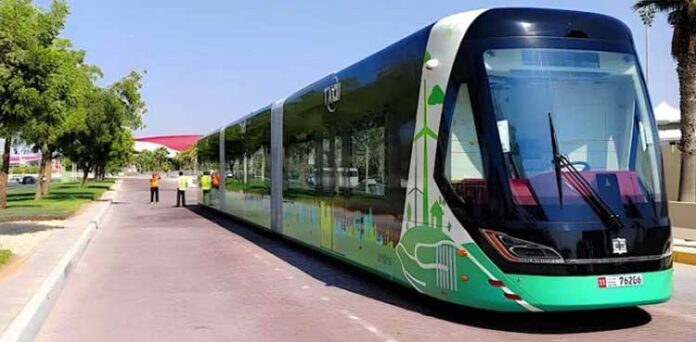Inside Lahore’s Electric Tram Project: Everything We Know So Far
- Pakistan’s first all-electric urban passenger tram is coming to Lahore, called the Super Autonomous Rapid Transit (SART).
- Runs on rubber tyres with virtual track technology, no rails needed, fully guided by GPS and sensors.
- It can carry up to 320 passengers, offering a smoother, quieter, and more spacious ride than regular buses.
- Trial route covers Thokar Niaz Baig to Harbanspura on Canal Road, with free rides during the pilot phase.
For the first time in history, Pakistan is getting its own urban passenger tram system in Lahore and it’s all-electric. Soon to be launched for public transport, this new service is officially called the Super Autonomous Rapid Transit (SART). If you look at it for the first time, it seems like something between a tram and a bus, but instead of running on metal rails, it moves on rubber tyres just like a bus.
Around the world, tram systems are already a popular choice for fast, clean, and efficient urban travel, and now Lahore is about to join that list. In this blog, we’ll break down exactly what this tram is, how it works, and everything you need to know about the project.
What Is SART?
Super Autonomous Rapid Transit (SART) is a new kind of public transport in Pakistan that works like a tram but doesn’t need railway tracks. Instead, it runs on normal roads, guided by GPS and sensors, following “virtual tracks.” It’s fully electric, can go about 40 km on one charge, and can quickly recharge in minutes. Each vehicle has three air-conditioned coaches, space for around 320 passengers, which is much higher than a regular bus, free Wi-Fi, and security cameras. Because it doesn’t need tracks, it’s cheaper and faster to set up, and it’s better for the environment since it doesn’t produce emissions.
Where Is It Running?
The first trial route is along Canal Road, going from Thokar Niaz Baig to Harbanspura. This is one of the busiest transport corridors in Lahore, making it a good testing ground for the government. For now, the service is in a pilot phase and rides are free, giving people the chance to try it out before regular fares are introduced.
Passenger Capacity and Comfort
Each electric tram can carry between 320 passengers at a time. Inside, the focus is on comfort and convenience. There’s air conditioning, CCTV cameras for safety, Wi-Fi for staying connected, and large digital display screens showing route and stop information. The ride is smooth and quiet, with minimal vibration compared to regular buses with diesel engines.
How It Works: The Technology
Inside, it’s a SART, virtual track technology. This system combines GPS, road sensors, and computer systems to keep the tram in perfect alignment along its route. While much of the driving is automated, a trained driver is always present to monitor operations and take control if needed. This blend of automation and human oversight ensures both efficiency and safety.
Charging and Range
The SART is powered entirely by electricity. A full charge allows it to travel up to 40 kilometers, while a 10-minute fast charge can add about 27 kilometers of range. Charging is quick enough to fit into short breaks, which helps keep the service running throughout the day without long downtimes.
Who Built It?
The SART comes from Norinco International, a Chinese company that’s been working on modern transport solutions worldwide. For Lahore, the initial trams have been imported, but locally assembled versions are already in the works. These will have slightly lower passenger capacity (around 250) but will match the imported models in terms of technology, comfort, and performance.
The Future of Electric Trams in Punjab
If the Lahore trial proves successful, the plan is to expand this technology to other major cities in Punjab, starting with Faisalabad and Gujranwala. Over the next few years, the goal is to introduce similar systems in up to 30 cities, creating a province-wide network of clean, modern public transport.
Why It Matters
We think that the government’s aim is to reduce traffic congestion, cut air pollution, and improve the daily commute for thousands of people. And since it can carry far more passengers than a regular bus, people spend less time waiting and can board without feeling cramped or overcrowded.


